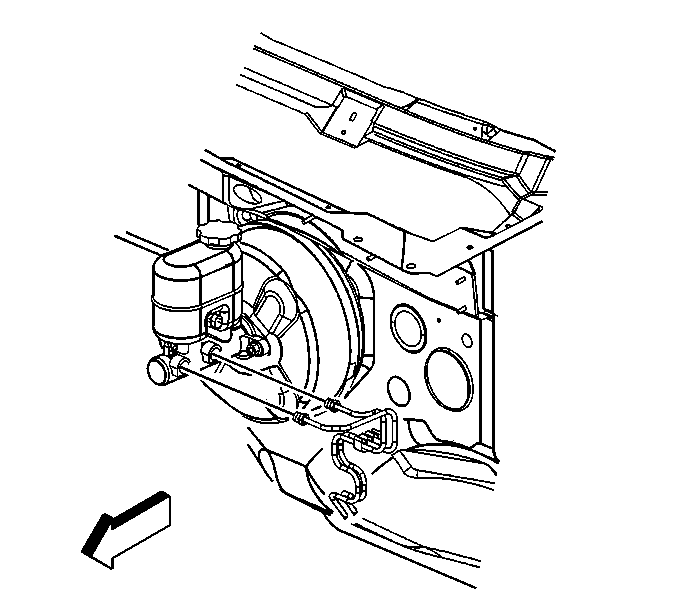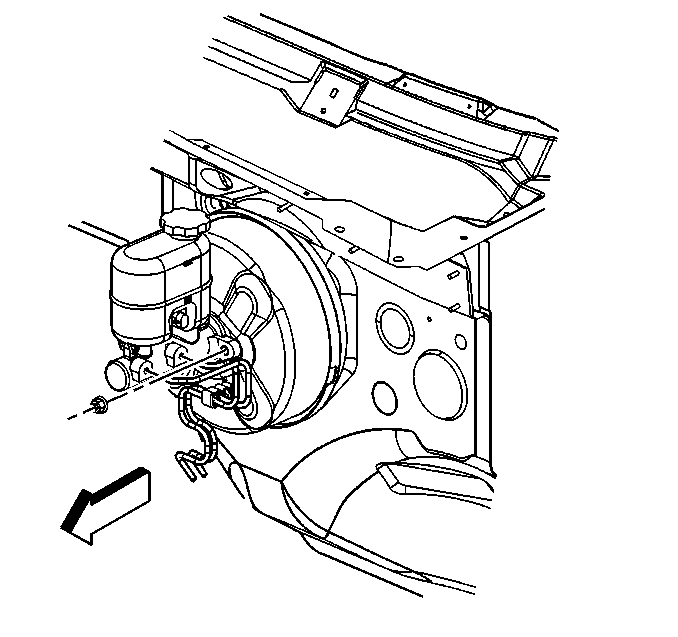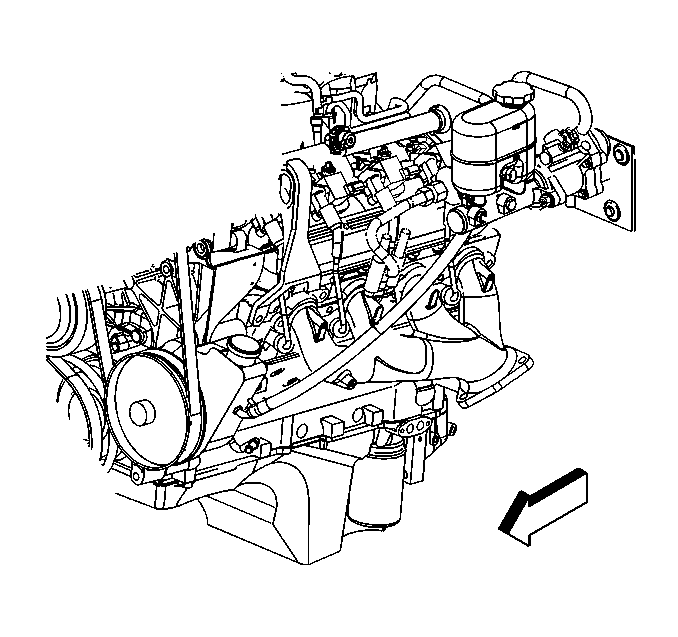Master Cylinder Replacement Vacuum Boost
Removal Procedure
- Apply the parking brake.
- Disconnect the electrical connection at the brake fluid level sensor
- Disconnect the brake pipes.
- Plug the pipes in order to prevent brake fluid loss or contamination.
- Remove the master cylinder mounting nuts.
- Remove the master cylinder.
- Remove the master cylinder reservoir. Refer to Master Cylinder Reservoir Replacement .


Installation Procedure
- Install the master cylinder reservoir. Refer to Master Cylinder Reservoir Replacement .
- Bench bleed the master cylinder. Refer to Master Cylinder Bench Bleeding .
- Install the master cylinder
- Install the master cylinder mounting nuts.
- Remove the pipe caps.
- Connect the brake pipes.
- Connect the electrical connection at the brake fluid level sensor.
- Bleed the brakes. Refer to Antilock Brake System Automated Bleed Procedure in Antilock Brake Systems.
- Release the parking brake.

Notice: Use the correct fastener in the correct location. Replacement fasteners must be the correct part number for that application. Fasteners requiring replacement or fasteners requiring the use of thread locking compound or sealant are identified in the service procedure. Do not use paints, lubricants, or corrosion inhibitors on fasteners or fastener joint surfaces unless specified. These coatings affect fastener torque and joint clamping force and may damage the fastener. Use the correct tightening sequence and specifications when installing fasteners in order to avoid damage to parts and systems.
Tighten
Tighten the nuts to 36 N·m (27 lb ft).

Tighten
Tighten the fittings to 25 N·m (18 lb ft).
Master Cylinder Replacement Hydraulic Boost
Removal Procedure
- Apply the parking brake.
- Disconnect the electrical connection at the brake fluid level sensor
- Disconnect the brake pipes.
- Plug the pipes in order to prevent brake fluid loss or contamination.
- Remove the master cylinder mounting nuts.
- Remove the master cylinder.
- Remove the master cylinder reservoir. Refer to Master Cylinder Reservoir Replacement .

Installation Procedure
- Install the master cylinder reservoir. Refer to Master Cylinder Reservoir Replacement .
- Bench bleed the master cylinder. Refer to Master Cylinder Bench Bleeding .
- Install the master cylinder.
- Install the master cylinder mounting nuts.
- Remove the pipe caps.
- Connect the brake pipes.
- Connect the electrical connection at the brake fluid level sensor.
- Bleed the brakes. Refer to Antilock Brake System Automated Bleed Procedure in Antilock Brake Systems.
- Release the parking brake.

Notice: Use the correct fastener in the correct location. Replacement fasteners must be the correct part number for that application. Fasteners requiring replacement or fasteners requiring the use of thread locking compound or sealant are identified in the service procedure. Do not use paints, lubricants, or corrosion inhibitors on fasteners or fastener joint surfaces unless specified. These coatings affect fastener torque and joint clamping force and may damage the fastener. Use the correct tightening sequence and specifications when installing fasteners in order to avoid damage to parts and systems.
Tighten
Tighten the nuts to 36 N·m (27 lb ft).
Tighten
Tighten the pipe fittings to 25 N·m (18 lb ft).
